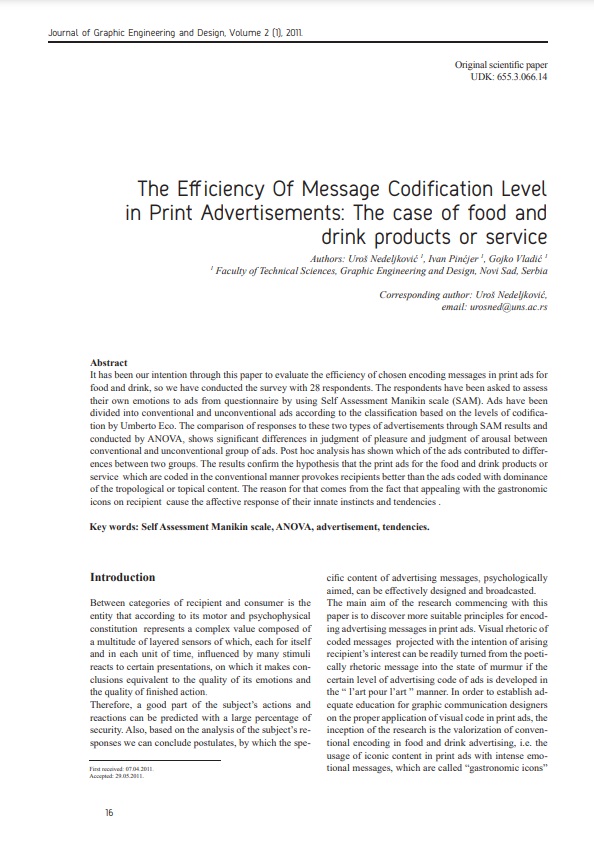The Efficiency Of Message Codification Level in Print Advertisements: The case of food and drink products or service

Published 2023-10-01
abstract views: 255 // Full text article (PDF): 160
Keywords
- Self Assessment Manikin scale,
- ANOVA,
- advertisement, tendencies
How to Cite
Copyright (c) 2011 © 2011 Authors. Published by the University of Novi Sad, Faculty of Technical Sciences, Department of Graphic Engineering and Design. This article is an open access article distributed under the terms and conditions of the Creative Commons Attribution license 3.0 Serbia.

This work is licensed under a Creative Commons Attribution 3.0 Unported License.
Abstract
-
It has been our intention through this paper to evaluate the efficiency of chosen encoding messages in print ads for food and drink, so we have conducted the survey with 28 respondents. The respondents have been asked to assess their own emotions to ads from questionnaire by using Self Assessment Manikin scale (SAM). Ads have been divided into conventional and unconventional ads according to the classification based on the levels of codification by Umberto Eco. The comparison of responses to these two types of advertisements through SAM results and conducted by ANOVA, shows significant differences in judgment of pleasure and judgment of arousal between conventional and unconventional group of ads. Post hoc analysis has shown which of the ads contributed to differences between two groups. The results confirm the hypothesis that the print ads for the food and drink products or service which are coded in the conventional manner provokes recipients better than the ads coded with dominance of the tropological or topical content. The reason for that comes from the fact that appealing with the gastronomic icons on recipient cause the affective response of their innate instincts and tendencies.

